|
The arrows on this can indicate it should be set out with the handle toward the curb.
|
The arrows on this can indicate it should be set out with the handle away from the curb.
|
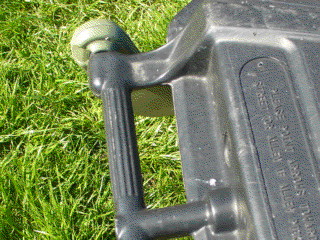
|
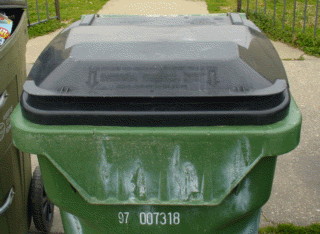
|
|
Which of these is facing the correct way?
|
|
This can has the wheels (and handle) toward the curb or "HTC".
|
This can has the wheels (and handle) toward the sidewalk or "HTS".
|

|
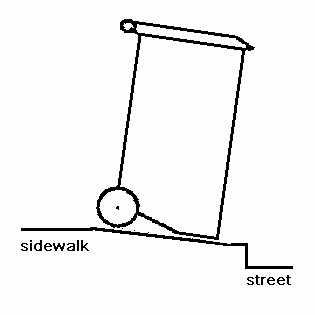
|
Notice the Slope
In the graphics here is a slight slope toward the curb. The sidewalk is slightly higher than the curb. This is ordinarily true because rain water is usually supposed to drain into the street where there will be other drains Although it might appear to the eye that the wheels-toward-sidewalk or HTS can is more stable because the tipping point is directly under the wheels otherwise, it is necessary to consider where the center of gravity is in relation to the tipping point. The HTC is in reality more stable because the center of gravity is farther from the tipping point.
|
Rolling?
Although putting more weight on the side opposite the wheels by putting it downslope might slightly decrease the likelyhood of rolling this is not significant for two important reasons. One is that the side without wheels is already lower so lowering it further increases the tipping hazard as just mentioned above. It doesn't make sense to decrease the rolling hazard by increasing the tipping hazard. Secondly, if it did roll a little that could prevent tipping. Realistically though if the slope is so sharp that rolling is a hazard then the can is likely to tip in a strong wind whichever way the can is turned. Other preparations are necessary to avoid tipping.
|
Push or Pull?
When pushing the cans it is necessary to tilt them lower than when pulling them. When pushing, if the tilt is insufficient the can just stands back up straight rather than rolling anywhere. The more the tilt, the more the weight shifts from the wheels to the handle. While the extra work is noticeable on smooth pavement; edges, rough or uneven surfaces can require considerably more tilt. Unexpected snags can cause the can to fly forward suddenly.
|
Exceptions?
One clear exception to pulling being easier is in going down several steps. That doesn't ordinarily occur since the cans are usually stored at ground level beside a building and when put out on pickup day it is only one step down the curb. So pulling is still easier in most circumstances.
|
It is still easier to pull going down less than three steps.
|
It is still easier to pull going down more than three steps if going down one at a time is possible.
|
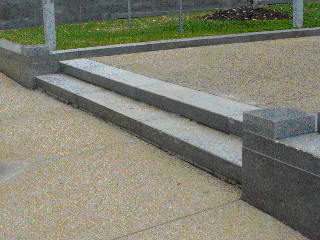
|
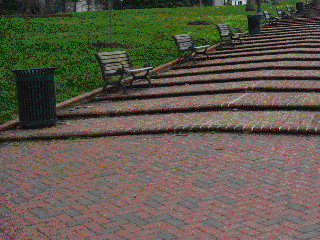
|
|
Perhaps a warning label like this one for going down numerous steep steps should be used.
|
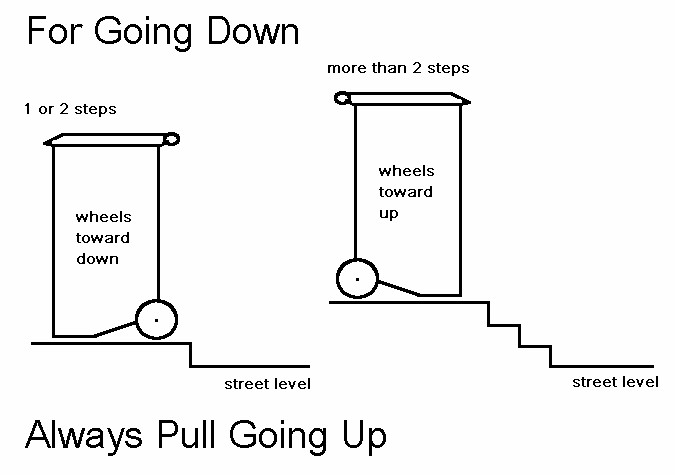
|
|
When this article first appeared on this website a cry arose that pulling the cans off the curb might damage the bottoms. I agree that in coming down off particularly high curbs the bottom of the can might catch, but the point here is that it happens a bit whenever releasing the can and is not entirely avoidable. Still some believe that the crews cannot be depended upon to be careful lowering the cans from the curb and prefer the crews to push. My belief is that crews who are not careful at the curb aren't going to be more careful lowering the can elsewhere. And still some believe this doesn't matter because the area of contact is larger elsewhere. I agree that the area of contact makes a difference, but I don't believe it makes as much difference as being careful (which can make the area of contact the same as an ordinary release or in many cases none at all) or enough difference to matter. There is a misconception that the force and velocity of the contact is much higher but over so few inches it is nearly the same as in an ordinary release. The main difference, such as it is, is the area of contact. In Richmond there are still many cans with arrows marked HTC. There isn't much I can do about removing those, they don't show signs of being flawed.
So long as you have concerns and believe extra work is necessary the crews will agree, and only when you are convinced something is more trouble than it is worth will they agree to that.
You are encouraged to take a look at the cans yourself. For your convenience I have several photos with some important things you should notice.
|
|
Notice the base of the HTC can on the left is designed to avoid catching the curb more so than the base of the HTS can on the right.
|
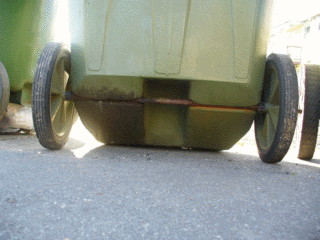
|
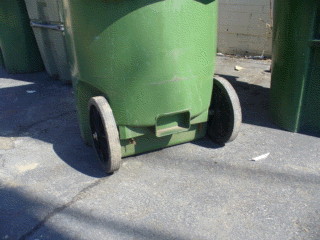
|
|
Notice that all the cans in the photo to the right have been put out HTS including the nearest one which is designed for HTC.
|

|
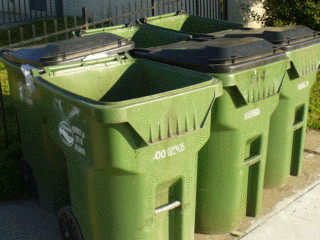
|
In the photo to the left, three of those six HTS cans lost their lids. It is not likely the trash crew deliberately destroyed the lids because that would only cause the cans to fill with rain water and become much heavier. And how does a light rain "fill" a can? Although they are put out on the curb on trash day they are usually kept against a building where the roof runoff can actually fill the can.
|
|
There are more HTS cans that lost lids.
|
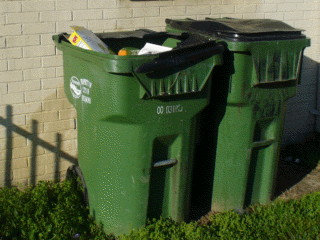
|

|
|
It is not known here what caused these cans to lose their lids.
Perhaps weathering, perhaps attempting to close the lids when the can is too full, perhaps from a fall.
|
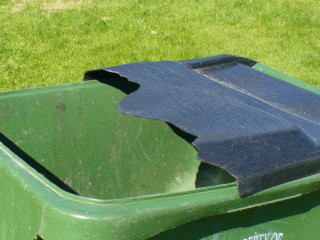
|
|
Here is another HTS can that lost its lid.
|
Below, two of those three HTS cans lost their lid.
|
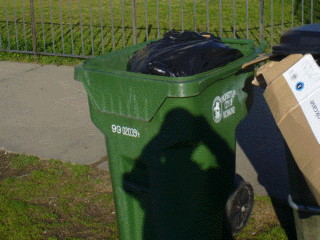
|
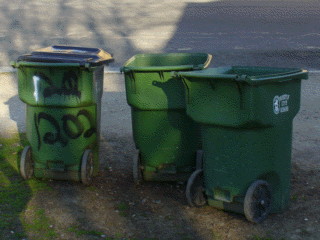
|
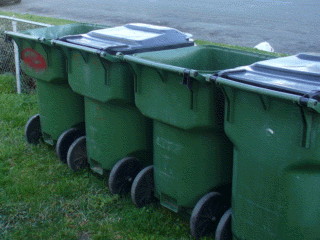
|
And here two of four have no lid. All these pictures of cans missing lids were taken within a few minutes' walk. On the whole the HTS cans had no lid in over thirty percent of cases. Only about one in twelve HTC cans lost its lid.
|
















